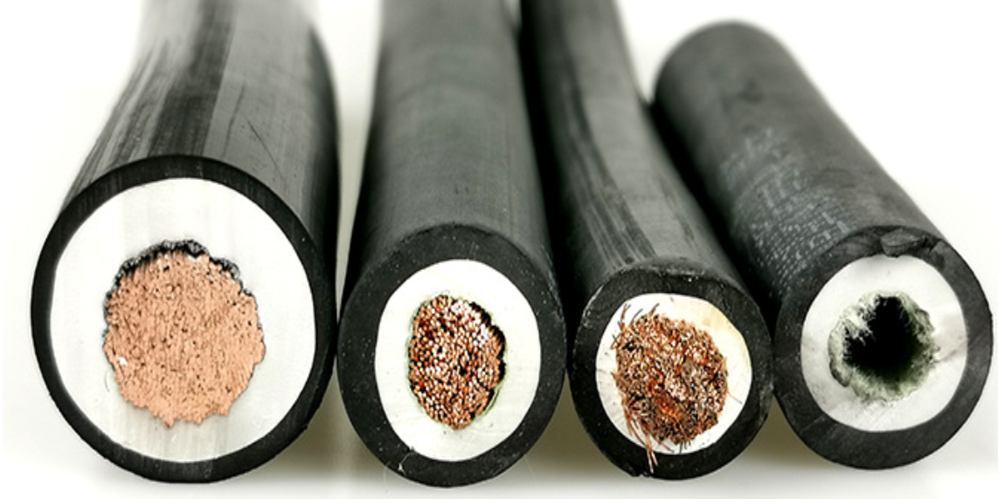Application and Selection of (LSZH) Low Smoke Halogen-Free Cables
Fire in confined spaces can turn deadly fast. Thick, toxic smoke limits visibility, delays evacuation, and damages electronics. That’s where LSZH cables make a difference.
Low Smoke Zero Halogen (LSZH) cables release minimal smoke and no corrosive gases during combustion. This makes them essential for safety-critical environments like transport systems, hospitals, and data centers.
In this article, I’ll walk through where LSZH and non-LSZH cables are used, and how to choose between them based on regulations, environment, and cost.
Where Are LSZH and Non-LSZH Cables Typically Used?
Choosing the right cable starts with understanding the application. Some locations legally require LSZH cables—others prioritize durability or cost.
LSZH Cable Applications
LSZH cables are used where fire safety, low smoke, and zero halogen emissions are top priorities. Typical areas include:
- Public Buildings: In airports, malls, hospitals, schools, and high-rises, LSZH wiring reduces harmful emissions and supports safer evacuation.
- Transportation Systems: Subway tunnels, railways, buses, and metro stations depend on LSZH cables to meet EN 45545 or NFPA 130 fire regulations.
- Data Centers: Halogen-free cables prevent corrosive smoke from damaging sensitive servers and electronic infrastructure.
- Underground & Enclosed Facilities: Parking garages, utility tunnels, and basements benefit from low smoke output in confined spaces.
Non-LSZH Cable Applications
Non-halogenated cables (like PVC or PE) still have a place where cost-efficiency or mechanical resistance takes priority:
- Manufacturing Facilities: In open industrial environments, PVC or PE-jacketed cables are standard for machines and power lines.
- Outdoor Power Networks: Above-ground and buried installations need cables with UV, water, and abrasion resistance—typically PVC or PE.
- Rural Infrastructure: Farms, remote stations, and telecommunication relays often opt for non-LSZH cables for cost and ruggedness.
Application Use Table
| Environment | LSZH Cable | Non-LSZH Cable |
|---|---|---|
| Airports, Hospitals, Public Venues | ✅ Required for fire safety | ❌ Not advised |
| Subway & Rail Systems | ✅ Mandatory (per code) | ❌ Not compliant |
| Data Centers & Labs | ✅ Prevents corrosion | ❌ Risk to electronics |
| Industrial Plants | ⚠️ Optional in closed areas | ✅ Standard |
| Outdoor Cables (UV/moisture) | ⚠️ Needs stabilizers | ✅ Preferred |
| Remote/Rural Setups | ⚠️ Costly for non-critical use | ✅ Widely used |
How to Select the Right Cable for Your Project?
The wrong cable can mean failed inspections, equipment damage, or worse—injuries in a fire. Use these three decision factors:
1. Fire Safety and Regulations
For any populated or enclosed installation, always start with compliance:
- EN 60332 – Flame spread
- IEC 61034 – Smoke density
- IEC 60754 – Acid gas emission
- NFPA 70 / EN 50575 – Building safety codes
If your project is in transport, healthcare, education, or IT infrastructure, LSZH is typically required.
2. Environmental and Chemical Exposure
Choose LSZH when:
- Installations are indoors, especially in closed spaces
- Fire risk is high, and visibility is crucial during evacuation
- Equipment is sensitive to corrosion (control rooms, data hubs)
Choose non-LSZH when:
- The environment is outdoor, with frequent UV or water exposure
- Oil, chemical, or abrasion resistance is more important than emissions
- The goal is lowest upfront cost in open industrial zones
3. Budget and Lifecycle Costs
Initial price matters—but so does repair cost after a fire:
| Factor | LSZH Cables | Non-LSZH Cables |
|---|---|---|
| Material Cost | 10–30% higher | Lower |
| Regulatory Pass Rate | ✅ Compliant | ❌ Often fails |
| Fire Damage Risk | Low (non-corrosive) | High (HCl smoke) |
| Maintenance Frequency | Lower | May require more replacement |
| Insurance Risk | Lower premiums | Higher risk classification |
If human safety or sensitive equipment is involved, LSZH pays for itself.
Summary: When to Use LSZH vs. Non-LSZH Cables?
Use LSZH cables for:
- Any area with strict fire safety codes
- Public or enclosed installations
- Projects with sensitive electronics
- Where life safety or visibility matters during fire
Use non-LSZH cables for:
- Outdoor or rural power distribution
- Open industrial plants where emissions aren’t a concern
- Cost-driven or low-risk infrastructure
FAQ: LSZH Cable Selection
Q1: Are LSZH cables required by law?
In many jurisdictions, yes—especially for transport, public buildings, and confined infrastructure. Check EN 45545, NFPA 130, and local codes.
Q2: Do LSZH cables perform as well mechanically as PVC?
Yes. Modern LSZH compounds offer ≥10 MPa tensile strength and ≥250% elongation—comparable to PVC.
Q3: Can LSZH cables be used outdoors?
They can—with the right UV and moisture stabilizers. Ask your supplier about outdoor-rated LSZH formulations.
Q4: What’s the downside of LSZH?
Higher cost and stricter extrusion conditions during production. But the trade-off is better fire safety and lower liability.
Need LSZH Cable Compounds That Meet Global Standards?
We supply halogen-free cable compounds customized for insulation, bedding, and sheathing. Whether for CPR compliance, NFPA-rated transit systems, or green building requirements—we’ll help you find the right formula.
👉 Contact Us Now for datasheets or technical support.

